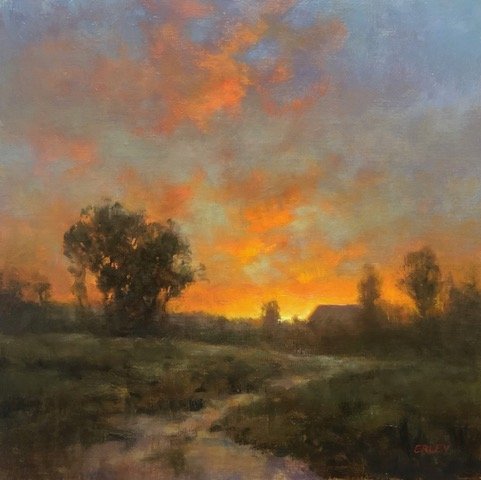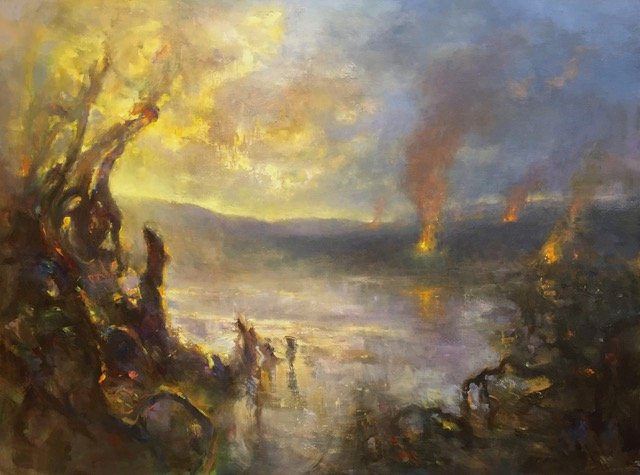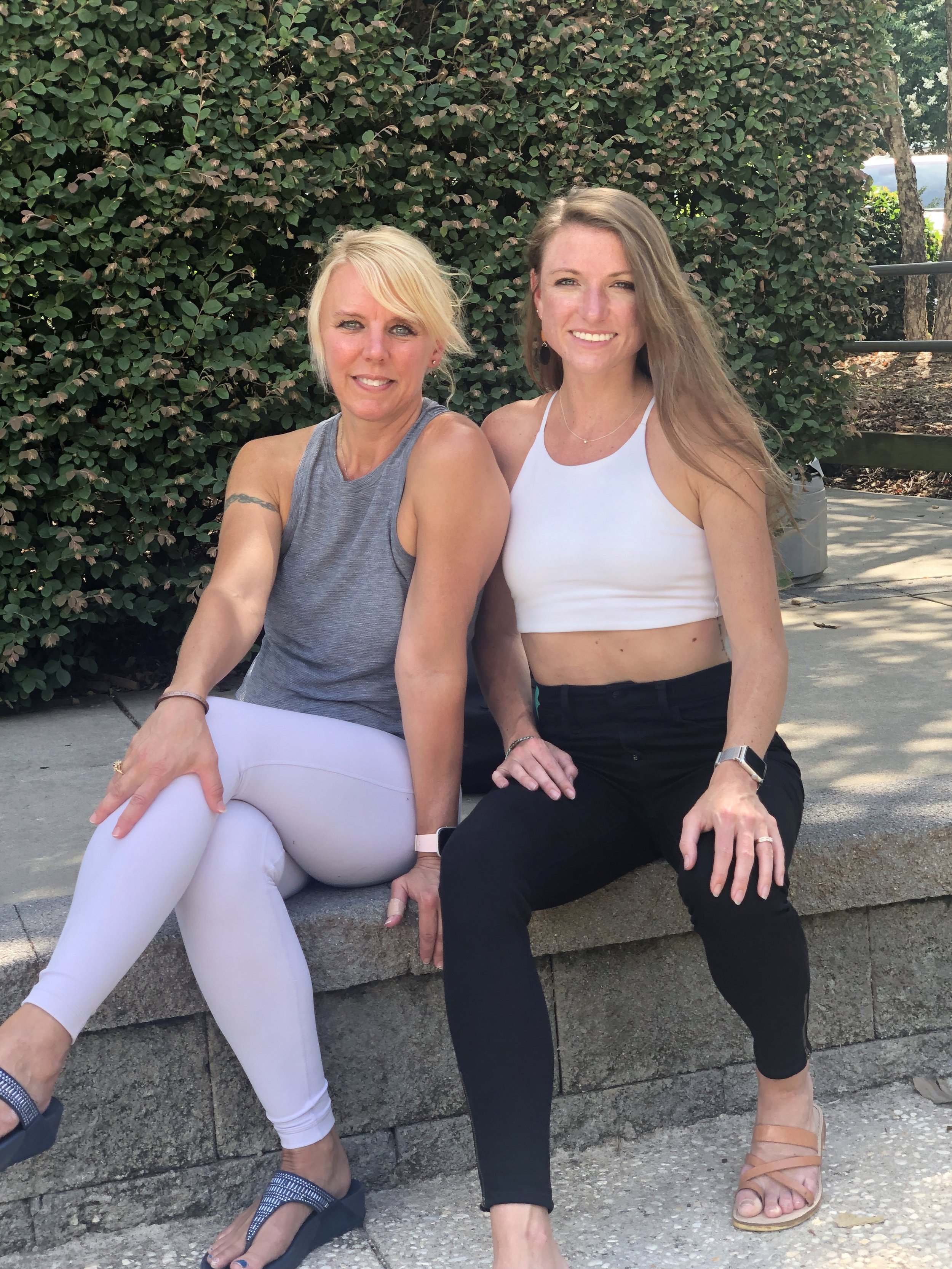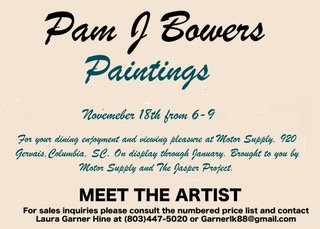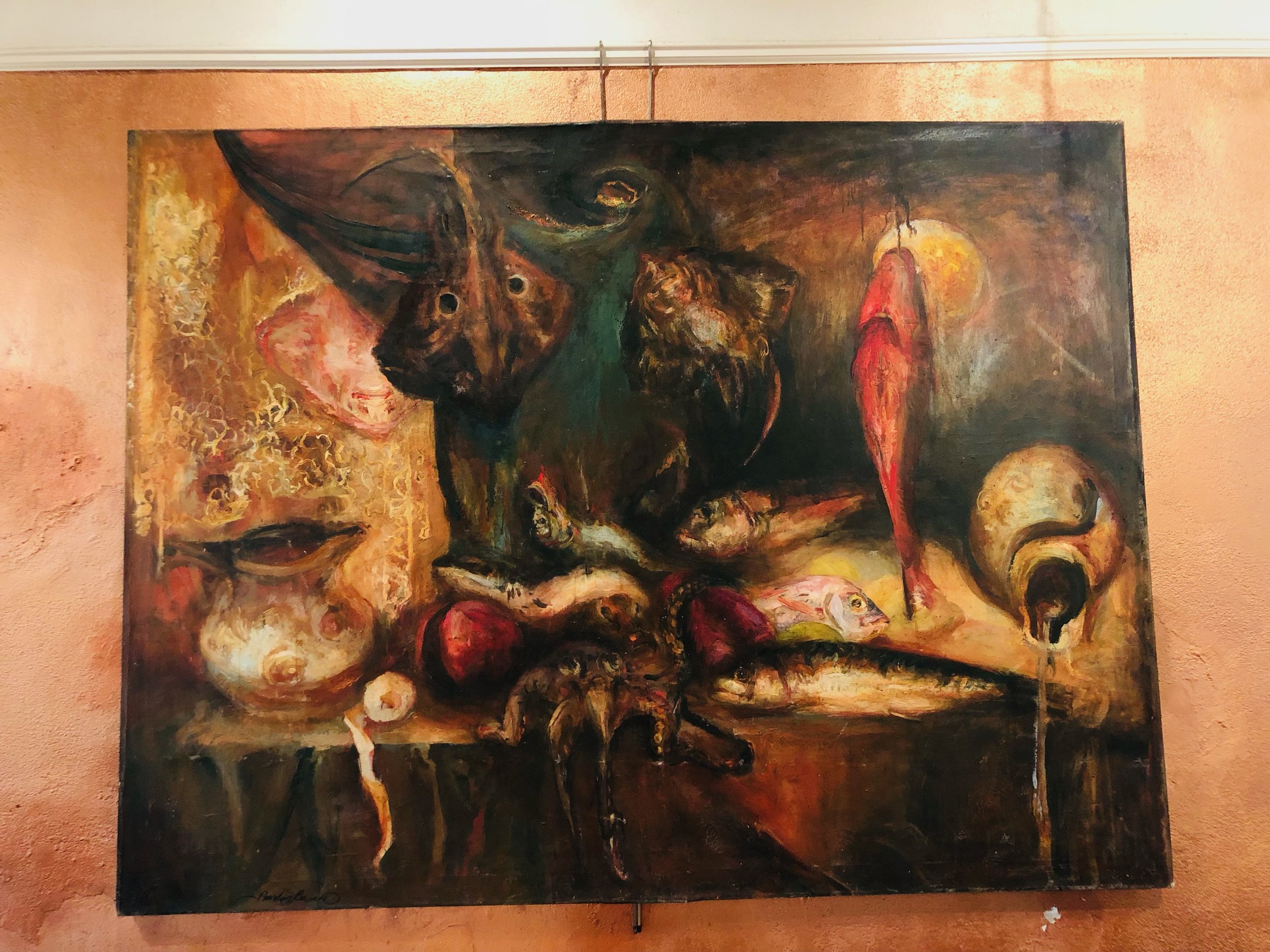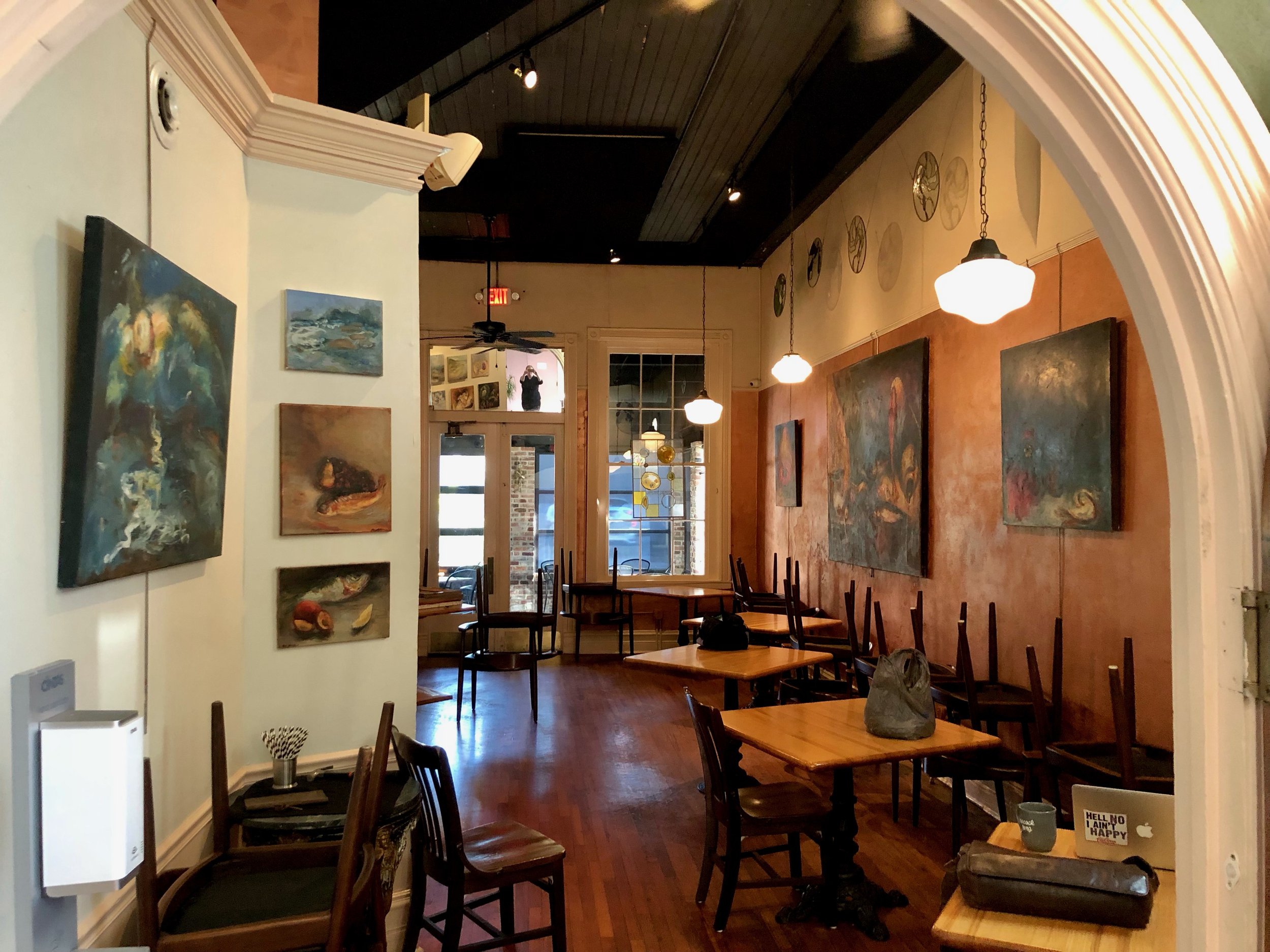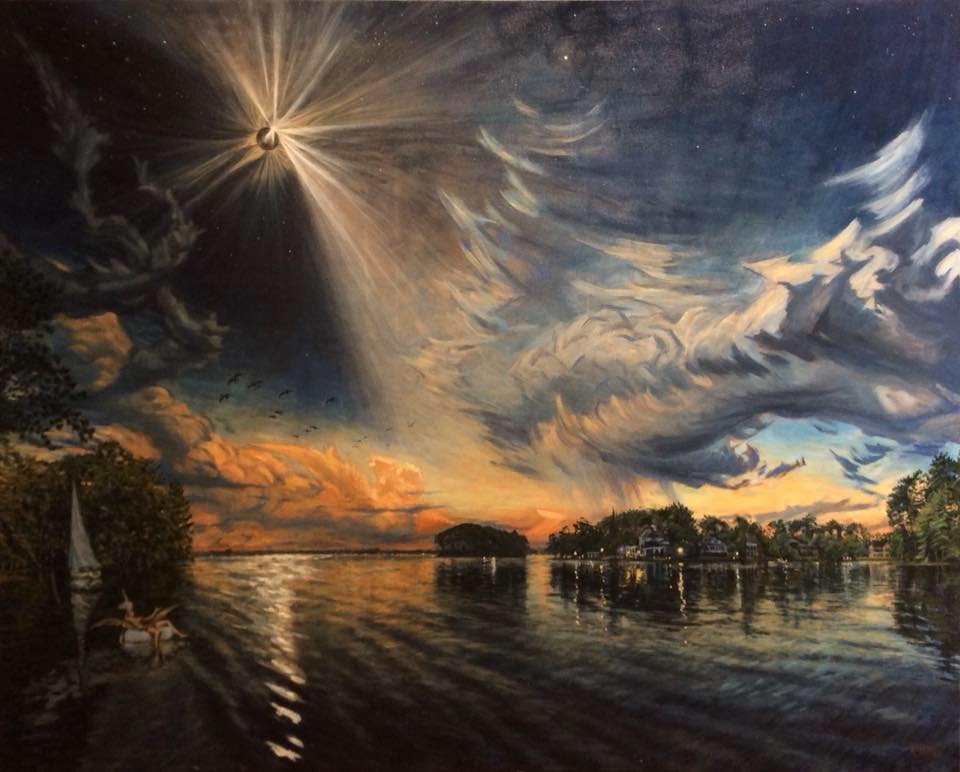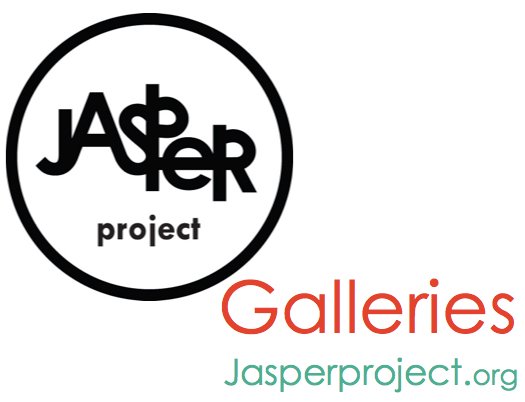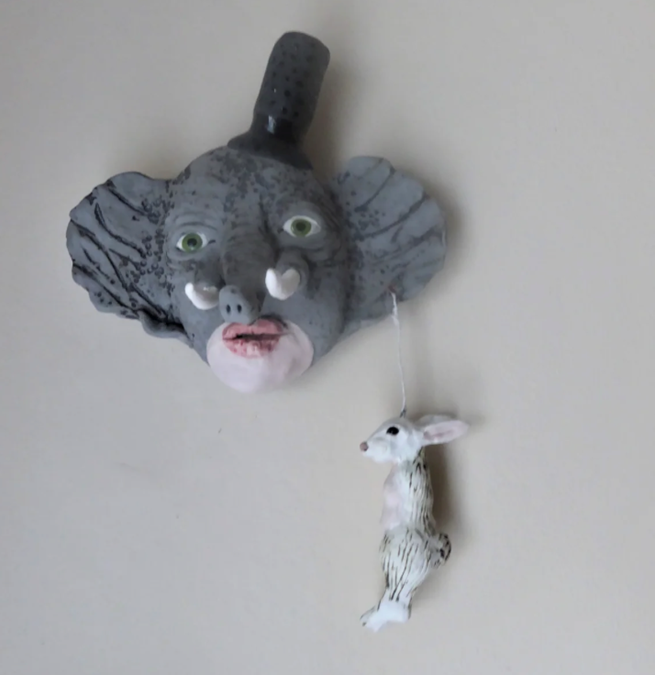“A work of art which did not begin in emotion is not art.” - Paul Cezanne
Homeward - oil on linen panel - 10 x 10 inches
Jasper: Can you tell us about your background - where you were born and raised, where you went to school, and how you came to live in Columbia?
Erley: I was born in Springfield, Illinois. Progressing through a Catholic grade school and an all-boys Catholic high school, I went to college an hour from home, getting my undergraduate - and later my graduate - degree in art from Illinois State University. I worked various jobs, my longest (other than self-employed artist) being as a graphic artist for the Illinois Department of Corrections.
Over ten years ago, I came to Columbia with my partner (now husband) Lemuel Watson when he accepted a deanship at the University of South Carolina. I taught art at USC for a few semesters, before devoting myself solely to painting. I felt the role of teacher could be filled by another, whereas only I could create the paintings signed with my name.
Matter-of-Fact Nude - oil on linen panel - 14 x 11 inches
Jasper: Where does your life as an artist fit into this trajectory?
Erley: I was drawn to art making early on as a way of comprehending the world. If I could picture something, I felt I could begin to understand it. As one of eight kids, drawing also allowed me a quiet retreat away from the bustling family, a place where I could get to know myself as an individual and not just one of the herd.
When the idea of choosing a profession later presented itself, I was debating between the life of a Catholic priest and that of an artist. Contemplating a future life of celibacy just as I was beginning to explore my own sexuality quickly turned my career choice toward the arts. Nonetheless, I do regard art as a spiritual calling, the studio as a church. I can’t help recalling Van Gogh’s failed attempt as a preacher before becoming a painter.
Once I was set on the life of an artist and I got my college education, I worked part-time at various jobs, which allowed time in the studio. When fortune smiled, art sales alone sustained me.
Aside from landscape painting, which is my bread and butter (though the slices can be thin at times!), I also paint still lifes, figures, portraits, and the occasional abstract piece. While generally my landscapes and abstracts are totally invented, the other work uses a different muscle, one requiring a deep look into what lies immediately before me. Meditating on an apple or a face, the world opens up in a surprising way. That has worked to my advantage in winning the ArtFields portrait competition in Lake City where I needed to complete three consecutive one-hour portrait in three rounds.
Dark Day Dawning - oil on canvas - 36 x 48 inches
In exploring the idiom of landscape painting, my vision sometimes takes a somber tone. "Dark Day Dawning" is perhaps a cautionary tale, an omen of a future born of present-day missteps.
Jasper: When did you start realizing accolades as an artist and, of them, what has been most meaningful to you?
Erley: I received a silver dish (engraved with the obscure phrase “Best in Junior Miscellaneous”) for a drawing at the Illinois State Fair when I was fourteen or so. Since then, I have been the recipient of over 120 prizes, grants, and purchase awards. I am most proud of those I received from representatives of the St. Louis Art Museum, the Indianapolis Art Museum, the Fogg Art Museum (Harvard University) and the Metropolitan Museum of Art. To have those “in the know” get your work is indeed validating. However, it is the hundreds of people who have chosen to live with my paintings that holds the most meaning for me. I truly believe my job as a painter is not finished when a work leaves my studio. Instead, it requires an engaged viewer to complete it, to coax out its ultimate meaning. To know that so many people have chosen to take on that task is indeed humbling.
Jasper: Who have been and continue to be your greatest artistic influences, how have they influenced you, and do you see them in your own work?
Erley: Perhaps my greatest artistic influence has been George Inness, the 19th-century American landscape painter. His poetic and painterly approach sets him apart from earlier landscape painters. He chose to steer away from detail for detail’s sake, as well as the grandiose compositions favored by his contemporaries of the Hudson River School, such as Frederic Edwin Church and Albert Bierstadt. Instead, he focused on semi-abstract compositions based on an underlying spiritual philosophy. Light infuses the scene to create a sometimes-mystical mood, though it is often married with an undeniable veracity to nature.
Aside from him, there is J. M. W. Turner (British), Jean-Baptiste-Camille Corot (French), and Caspar David Friedrich (German). All share a romantic vision centered on a transcendent quality of light.
A contemporary painter whose work I enjoy is Joan Nelson. She will “quote” pieces of old master paintings in her intimate paintings. When I feel myself stretching in a more abstract direction, Brian Rutenberg’s colorful compositions inspire me.
Jasper: What have been your greatest artistic challenges and how have you met them or how are you meeting them?
Erley: My biggest challenge is to remain fully engaged and juiced by the process of painting. Like any act of love, it requires an openness and awareness to what is called for in that moment. I fall short of the mark when I am distracted, uncertain, when I’d rather be someplace other than in the studio.
I know that viewers will only be excited by my work if I am. That’s something that can’t be fudged. I’ve seen so many glib, slick, uninteresting paintings in my life, I just feel it does the profession a real injustice. To be invested emotionally and to embed those emotions in paint is always my goal.

